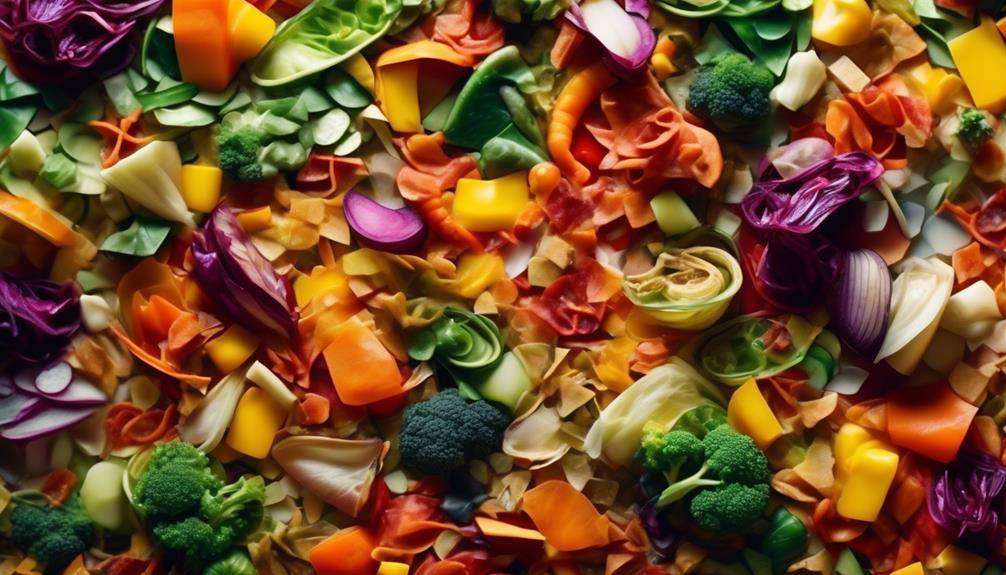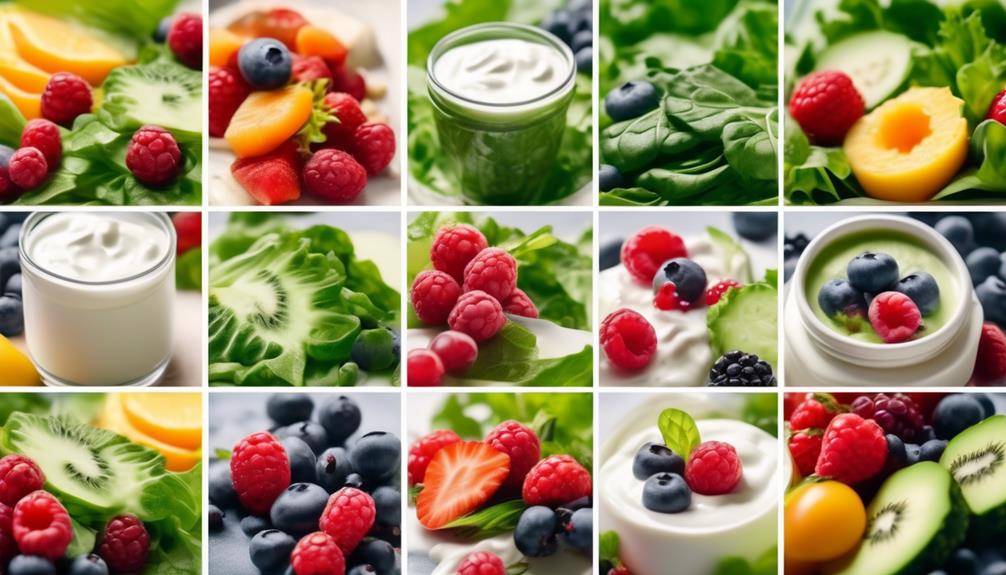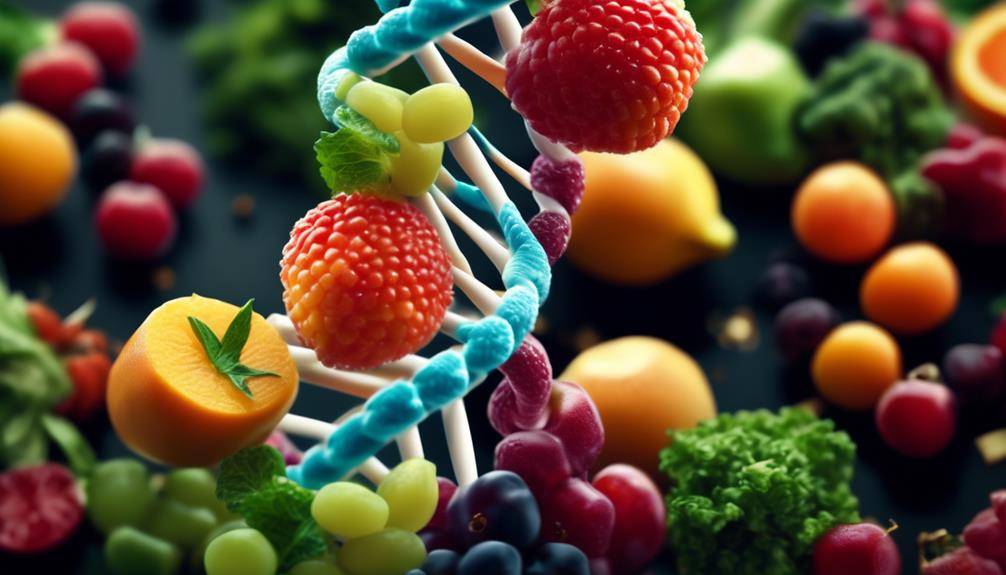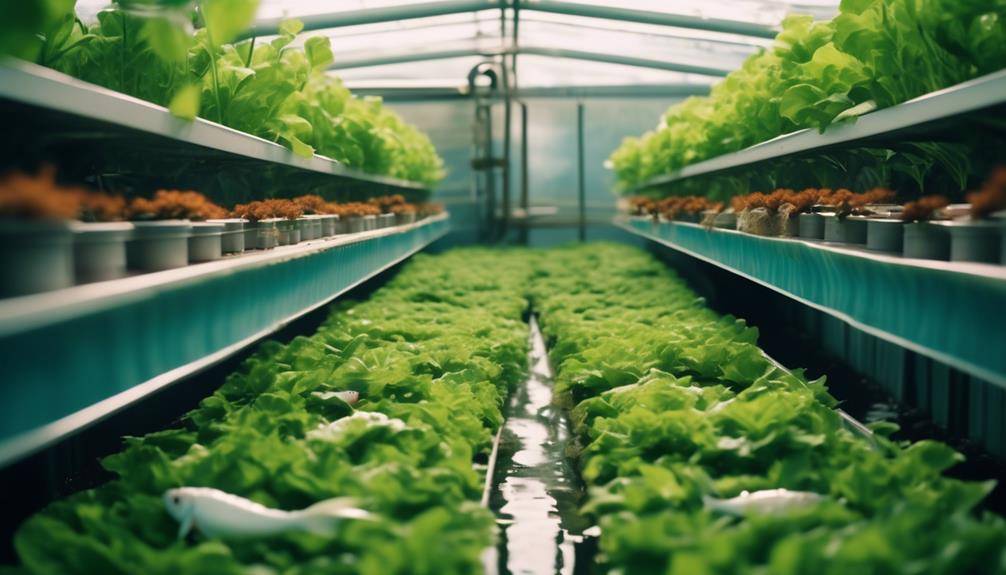The Best Organic Farming Using Aquaponics Systems
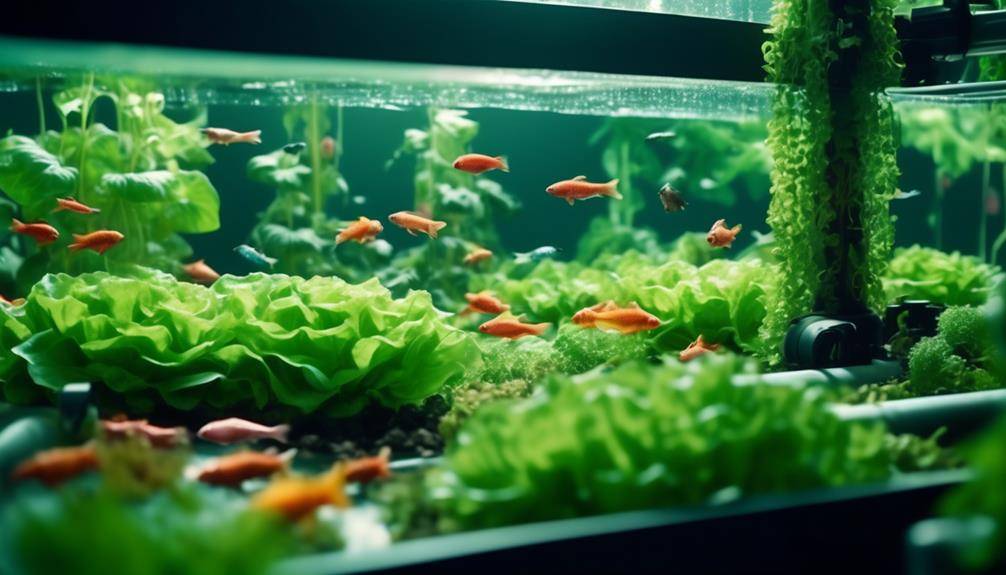
Have you ever wondered if there’s a more sustainable and efficient way to grow your own organic food? Well, look no further. Organic Farming Using Aquaponics Systems is a groundbreaking method that combines the principles of aquaculture and hydroponics to create a self-sustaining ecosystem. By alluding to the possibility of a more sustainable and efficient way of growing organic food, you’re left curious to discover how aquaponics systems work and how they can revolutionize the way we produce our food.
Benefits of Aquaponics Systems
Aquaponics systems offer numerous benefits, making them a highly efficient and sustainable method of organic farming. One of the main advantages of aquaponics is its water efficiency. Compared to traditional soil-based agriculture, aquaponics uses significantly less water. This is because the water in the system is continuously recycled and reused, minimizing water waste. In fact, aquaponics typically uses 90% less water than conventional farming methods, making it an excellent choice for regions with water scarcity or drought conditions.
Another benefit of aquaponics is its ability to produce both plants and fish simultaneously. The symbiotic relationship between the fish and plants creates a closed-loop system where the waste produced by the fish is used as a nutrient-rich fertilizer for the plants. This eliminates the need for chemical fertilizers and reduces the risk of water pollution. It also allows for the cultivation of a wide variety of crops, from leafy greens to herbs and even fruiting plants.
Furthermore, aquaponics systems are highly scalable and adaptable. They can be set up in small urban spaces or large commercial farms, allowing for year-round production of fresh, organic food. The controlled environment of aquaponics also means that crops are less susceptible to pests and diseases, reducing the need for pesticides and herbicides.
How Aquaponics Works
To understand how aquaponics works, it is essential to grasp the symbiotic relationship between the fish and plants in the system. Aquaponics technology utilizes a closed-loop system that combines aquaculture (raising fish) and hydroponics (growing plants without soil) to create a sustainable and efficient farming method.
In an aquaponics system, fish waste becomes a valuable source of nutrients for the plants. As fish excrete waste, the water becomes rich in essential nutrients like nitrogen, phosphorus, and potassium. This nutrient-rich water is then circulated to the hydroponic beds where the plants are grown. The plants uptake these nutrients, effectively filtering and purifying the water for the fish. The purified water is then recirculated back to the fish tank, completing the cycle.
This symbiotic relationship is what makes aquaponics sustainable. It eliminates the need for chemical fertilizers, as the fish waste provides all the necessary nutrients for plant growth. Additionally, the water is continuously recycled, reducing the need for large amounts of water compared to traditional farming methods.
Aquaponics technology also allows for the cultivation of a wide variety of plants and fish species. Leafy greens, herbs, vegetables, and even some fruiting plants can thrive in aquaponic systems. Similarly, a range of fish species such as tilapia, trout, and catfish can be raised in the tanks.
Choosing the Right Fish for Aquaponics
In order to successfully implement an aquaponics system, it is crucial to carefully select the appropriate fish species for optimal symbiosis with the plants. The fish you choose will not only provide nutrients for the plants through their waste, but they will also help maintain the overall balance of the system. Here are three important factors to consider when selecting fish for your aquaponics system:
- Water Temperature: Different fish species have different temperature requirements. It is important to choose fish that can thrive in the temperature range of your aquaponics system. Ideally, the water temperature should be within the range of 70 to 86 degrees Fahrenheit (21 to 30 degrees Celsius). Tilapia and trout are popular choices for aquaponics systems, as they can tolerate a wide range of temperatures.
- Growth Rate: The growth rate of the fish will determine how quickly you can harvest them for consumption. If you are looking for fast-growing fish, consider species like tilapia, catfish, or koi. On the other hand, if you prefer slower-growing fish that require less maintenance, you might consider species like trout or perch.
- Diet: Different fish species have different dietary requirements. Some fish are herbivorous, while others are omnivorous or carnivorous. It is important to choose fish that can thrive on the feed you plan to provide. In some cases, you may need to supplement their diet with additional nutrients to ensure they are getting all the necessary vitamins and minerals.
Selecting Suitable Plants for Aquaponics
When selecting plants for your aquaponics system, there are a few important considerations to keep in mind. First, you need to choose plants that are compatible with the aquatic environment and can thrive in water-based systems. Additionally, it’s crucial to select plants that have similar nutrient requirements as the fish in your system to ensure optimal growth and health. By carefully considering these factors, you can create a harmonious and productive aquaponics ecosystem.
Plant Selection Considerations
Consider carefully which plants will thrive in your aquaponics system. The success of your organic farming venture depends on selecting suitable plants that can grow well in this unique system. When choosing plants for your aquaponics setup, there are a few key factors to keep in mind.
- Plant spacing: Take into account the space available in your aquaponics system and choose plants that can grow within that space. Some plants, like lettuce or herbs, have shallow root systems and can be planted closer together, while others, like tomatoes or cucumbers, require more space for their sprawling vines.
- Crop rotation: Implementing a crop rotation plan is essential to maintain the health and productivity of your aquaponics system. Rotate your plant varieties to prevent the buildup of pests and diseases, and to ensure balanced nutrient uptake from the water.
- Adaptability to water conditions: Different plants have varying water requirements. Select plants that can tolerate the water conditions in your aquaponics system, such as pH levels and nutrient concentrations.
Aquaponics Plant Compatibility
Choose plants for your aquaponics system based on their compatibility with the unique conditions of the system. Aquaponics plant compatibility refers to selecting suitable plant varieties that can thrive in the specific environment created by the aquaponics system. When choosing plants, it is important to consider various aquaponics plant growth factors, such as the water pH, temperature, nutrient levels, and lighting conditions.
Some plant varieties that are commonly grown in aquaponics systems include leafy greens like lettuce, spinach, and kale, herbs like basil and mint, and fruiting plants like tomatoes and peppers. These plants are generally compatible with the conditions provided by the system and can efficiently utilize the nutrients provided by the fish waste. By selecting compatible plants, you can ensure optimal growth and productivity in your aquaponics system.
Maintaining Water Quality in Aquaponics
To maintain optimal water quality in aquaponics systems, it is crucial to regularly monitor and manage key parameters such as pH, ammonia levels, and dissolved oxygen. These parameters directly affect the health and well-being of both fish and plants in the system. By maintaining proper water quality, you can ensure a thriving and productive aquaponics system.
Here are three essential steps to maintain water quality in aquaponics:
- Regular testing of pH balance: pH is a measure of how acidic or alkaline the water is. In aquaponics, maintaining a pH range between 6.8 and 7.2 is ideal for the well-being of the fish and plants. Regularly test the pH level using a reliable pH testing kit and adjust it if necessary. Adding pH adjusters or buffers can help stabilize the pH and maintain a suitable environment for the organisms in the system.
- Monitoring ammonia levels: Ammonia, a byproduct of fish waste, can be toxic to both fish and plants if it accumulates. It is important to monitor ammonia levels regularly using ammonia test kits. If ammonia levels rise, it indicates a problem with the water filtration system or an overstocked fish tank. Taking immediate action, such as increasing the water filtration capacity or reducing the number of fish, can help maintain optimal water quality.
- Ensuring adequate dissolved oxygen: Dissolved oxygen is vital for the survival of fish and the root health of plants. Insufficient oxygen levels can lead to stress, diseases, and poor plant growth. To promote adequate oxygenation, consider using aerators or air stones to increase oxygen levels in the water. Regularly monitor dissolved oxygen levels using a dissolved oxygen meter and make adjustments as needed.
Nutrient Cycling in Aquaponics
Maintaining nutrient cycling is a critical aspect of ensuring the health and productivity of both fish and plants in aquaponics systems. In aquaponics, fish waste serves as a valuable source of nutrients for plant growth. As fish consume food, they produce waste in the form of ammonia, which can be toxic to the fish if not properly managed. However, in an aquaponics system, this waste serves as an essential fertilizer for plants.
The process of nutrient cycling begins with the breakdown of fish waste by beneficial bacteria. These bacteria convert the toxic ammonia into nitrite and then into nitrate, which is a form of nitrogen that plants can readily absorb. Nitrate is a vital nutrient for plant growth and is essential for the development of leaves, stems, and roots.
Once the nitrate is produced, it is transported through the water to the plant roots, where it is taken up by the plants. This process provides the plants with the necessary nutrients for their growth and development. By utilizing the nutrients in the fish waste, aquaponics systems create a closed-loop system where the waste from one organism becomes the food for another.
In addition to the fish waste, plants also play a crucial role in maintaining nutrient cycling in aquaponics systems. As plants absorb nutrients from the water, they help to filter and purify it, creating a healthier environment for the fish. This symbiotic relationship between fish and plants ensures a continuous cycle of nutrient uptake and release, promoting the overall health and productivity of the system.
Maximizing Yield in Aquaponics
To maximize yield in aquaponics, you need to implement effective nutrient management techniques. This involves carefully monitoring and adjusting the nutrient levels in the system to ensure optimal growth and health of both the fish and plants. Additionally, it is important to optimize the interaction between the fish and plants, as they rely on each other for nutrient exchange. By creating a balanced and harmonious environment, you can maximize the productivity and yield of your aquaponics system.
Nutrient Management Techniques
Maximizing yield in aquaponics requires efficient nutrient management techniques. To ensure optimal growth and productivity of your crops, consider implementing the following nutrient management techniques:
- Crop rotation: Rotating crops helps prevent the depletion of specific nutrients in the system. By alternating plant species, you can balance nutrient uptake and reduce the risk of nutrient deficiencies.
- Organic fertilizers: Incorporating organic fertilizers into your aquaponics system can provide essential nutrients to your plants. Options such as compost, worm castings, and fish waste can enrich the water with nitrogen, phosphorus, and potassium, promoting healthy plant growth.
- Nutrient monitoring: Regularly monitoring the nutrient levels in your aquaponics system is crucial for maintaining the right balance. Testing the water for pH, ammonia, nitrate, and other nutrients allows you to make necessary adjustments to optimize nutrient availability for your crops.
Optimizing Fish and Plant Interaction
Efficient fish and plant interaction is crucial for maximizing yield in aquaponics systems. In aquaponics, fish and plants have a symbiotic relationship where the waste produced by the fish serves as a nutrient source for the plants. Optimizing this symbiosis is essential to ensure the health and productivity of both the fish and the plants. To achieve this, several factors need to be considered. Firstly, the stocking density of fish should be balanced with the plant’s nutrient requirements to prevent nutrient deficiencies or excesses.
Secondly, the choice of fish species should align with the needs of the plants, such as their preferred pH or temperature range. Lastly, maintaining water quality parameters, such as dissolved oxygen levels and pH, is vital for fostering a favorable environment for both fish and plants. By optimizing the fish and plant interaction, aquaponics producers can maximize their yield and promote sustainable and efficient aquaponics production.
Pest and Disease Control in Aquaponics
Implementing effective pest and disease control measures is crucial in maintaining the health and productivity of aquaponics systems. In order to ensure the success of your organic aquaponics farm, it is important to employ natural pest control and organic disease management strategies. Here are three key methods to consider:
- Biological control: Introduce beneficial insects and organisms that prey on pests into your aquaponics system. Ladybugs, lacewings, and predatory mites are all examples of natural predators that can help control common pests such as aphids and spider mites. These predators can be introduced directly into the system or attracted by planting companion plants that provide them with food and shelter.
- Crop rotation: Rotate your crops regularly to prevent the buildup of pests and diseases. By alternating different plant species, you disrupt pest life cycles and reduce the risk of infestations. Additionally, rotating crops helps maintain soil health and balance nutrient levels, which in turn promotes plant growth and reduces susceptibility to diseases.
- Maintaining water quality: Maintain optimal water quality parameters in your aquaponics system to prevent the growth and spread of diseases. Regularly monitor pH levels, temperature, and dissolved oxygen levels to ensure they are within the appropriate range for the species you are cultivating. Adequate filtration and aeration are also essential for preventing the buildup of harmful bacteria and pathogens.
Seasonal Considerations in Aquaponics
When considering seasonal factors in aquaponics, two important aspects to focus on are temperature control and light requirements. Maintaining an optimal temperature range is crucial for the health and growth of both fish and plants in the system. Additionally, providing adequate light is essential for photosynthesis and the overall productivity of the plants. By carefully managing these factors, you can ensure the success of your aquaponics system throughout the changing seasons.
Temperature Control
To maintain optimal conditions for your aquaponics system, careful temperature control is essential in order to support the health and productivity of your plants and fish. Here are three key considerations for temperature regulation and energy efficiency in your aquaponics system:
- Insulation: Proper insulation of your system can help regulate temperature fluctuations and prevent heat loss during colder seasons. Insulate the walls and cover the system with materials such as foam or bubble wrap to retain heat and reduce energy consumption.
- Heating and cooling: Invest in a reliable heating and cooling system that can regulate the temperature within your system. Use energy-efficient devices like heat pumps or solar heaters to maintain the desired temperature range for your plants and fish.
- Monitoring and automation: Install temperature sensors and automation systems to monitor and maintain the temperature within your aquaponics system. This allows for real-time adjustments and ensures that your plants and fish are always in an optimal environment.
Light Requirements
Maintaining optimal light conditions is crucial for the seasonal success of your aquaponics system, as it directly impacts the growth and development of both your plants and fish. Light is an essential factor in plant growth as it drives photosynthesis, the process through which plants convert light energy into chemical energy, which fuels their growth.
In an aquaponics system, where plants are grown in water-based environments, artificial lighting can be used to supplement natural light and ensure consistent and sufficient light levels throughout the year. LED lights are commonly used in aquaponics systems due to their energy efficiency and ability to provide the specific light spectrum needed for plant growth. By strategically placing artificial lights above the plants, you can promote healthy growth and optimize the productivity of your aquaponics system.
Scaling up Aquaponics Systems
Scaling up Aquaponics Systems requires careful planning and strategic implementation to ensure optimal functionality and productivity. As you expand your aquaponics system, you may encounter several scaling challenges and need to develop effective expansion strategies. Here are some important considerations to keep in mind:
- System Design: When scaling up your aquaponics system, it is crucial to reassess your system design. Consider factors such as the size and layout of your grow beds, the number of fish tanks, and the capacity of your filtration system. Ensuring that your system design can accommodate the increased volume of plants and fish is essential for a successful expansion.
- Water and Nutrient Management: As your aquaponics system grows, managing water and nutrient levels becomes more complex. You will need to carefully monitor and adjust the water flow, oxygenation, and nutrient concentrations to maintain ideal conditions for both the plants and the fish. Implementing automated systems and advanced monitoring tools can greatly assist in achieving optimal water and nutrient management.
- Operational Efficiency: Scaling up your aquaponics system may require changes to your operational processes. It is important to streamline tasks such as planting, harvesting, and maintenance to increase efficiency and reduce labor demands. Consider implementing automation and mechanization where possible to optimize productivity and minimize operational costs.
Cost Analysis of Aquaponics Farming
Aquaponics farming requires a comprehensive cost analysis to accurately assess the financial feasibility and potential return on investment. Conducting an economic viability and profitability analysis is crucial for ensuring the success of an aquaponics system. This analysis involves evaluating both the initial costs of setting up the system and the ongoing operational expenses, as well as projecting potential revenues.
The initial costs of aquaponics farming include the construction of the greenhouse or growing area, the purchase of fish tanks and filters, the installation of the plumbing and irrigation systems, and the procurement of fish and plant stock. Additionally, there may be expenses associated with obtaining necessary permits and licenses, as well as hiring labor for system setup. A thorough cost analysis should take into account these initial investments to determine the breakeven point and the time it will take to recoup the initial expenses.
In terms of ongoing expenses, aquaponics farming requires energy to power pumps, heaters, and lighting systems. Water quality testing and treatment supplies, as well as fish feed and plant nutrients, are also recurring costs. It is important to consider the cost of labor for system maintenance, including monitoring water parameters, managing fish health, and harvesting plants. These ongoing expenses need to be factored into the profitability analysis to determine the system’s long-term financial viability.
To assess the profitability of aquaponics farming, revenue projections can be made based on the expected yield of fish and plants. The market prices for organic produce and sustainably raised fish can vary, so it is important to conduct market research to determine the potential income from selling the harvested products. By comparing the projected revenues with the total costs, a profitability analysis can determine if the aquaponics system is financially viable and if the return on investment is satisfactory.
Success Stories in Aquaponics Farming
Many aquaponics farmers have achieved remarkable success by implementing innovative techniques and strategies in their farming operations. These successful case studies not only demonstrate the potential of aquaponics farming but also provide valuable insights for future prospects in this field.
- Urban Greens – A small-scale aquaponics farm located in the heart of a bustling city, Urban Greens has successfully transformed vacant rooftops into thriving agricultural spaces. By utilizing vertical farming techniques and optimizing the use of limited space, they are able to grow a variety of leafy greens, herbs, and even small fruiting plants. Their innovative approach has not only provided fresh and organic produce to urban dwellers but has also contributed to the revitalization of unused urban spaces.
- Sustainable Seafood – Aquaponics farming has shown great potential in the production of sustainable seafood. One successful case study involves a farm that specializes in raising tilapia and growing leafy greens simultaneously. By utilizing the waste produced by the fish as a nutrient-rich fertilizer for the plants, this farm has achieved a closed-loop system where both the fish and plants thrive. This not only reduces the environmental impact of traditional fish farming but also provides a reliable source of high-quality seafood.
- Community Empowerment – Aquaponics farming has proven to be a powerful tool for community empowerment, particularly in areas with limited access to fresh produce. One successful case study involves a community-based aquaponics farm that provides job opportunities and fresh produce to a disadvantaged neighborhood. By working together, the community not only gains access to nutritious food but also develops valuable skills in sustainable agriculture. This case study highlights the potential of aquaponics farming to address food insecurity and improve community well-being.
These successful case studies in aquaponics farming demonstrate the potential of this innovative approach to agriculture. As more farmers adopt these techniques and strategies, the future prospects of aquaponics farming look promising in terms of sustainable food production, urban agriculture, and community empowerment.
Organic Farming Using Aquaponics Systems; Frequently Asked Questions
Can Aquaponics Systems Be Used for Commercial Farming?
Aquaponics systems are commercially viable for farming due to their ability to produce high-quality organic crops while also raising fish. The economic benefits include reduced water usage, lower fertilizer costs, and increased crop yields.
What Types of Fish Are Commonly Used in Aquaponics Systems?
In aquaponics systems, you have various fish options to choose from. Commonly used fish include tilapia, trout, and catfish. These fish not only provide a food source but also contribute to the nutrient cycle, enhancing the benefits of using fish in aquaponics.
Can Aquaponics Systems Be Used in Areas With Limited Water Resources?
Yes, aquaponics systems can be used in areas with limited water resources. Using aquaponics systems for sustainable agriculture offers many benefits, including water conservation. These systems recycle and reuse water, making them an efficient solution for water-scarce regions.
Are There Any Specific Climate Requirements for Successful Aquaponics Farming?
To have successful aquaponics farming, you must consider climate requirements and environmental conditions. Certain factors like temperature, humidity, and sunlight levels are crucial for the optimal growth of plants and fish in the aquaponics system.
How Long Does It Take for an Aquaponics System to Become Fully Established and Productive?
It typically takes several weeks to months for an aquaponics system to become fully established and productive. The benefits of aquaponics include efficient nutrient cycling, reduced water usage, and the ability to grow organic produce.
Conclusion
In conclusion, aquaponics systems offer numerous benefits for organic farming. By combining fish farming and plant cultivation, these systems provide a sustainable and efficient method of agriculture. The proper selection of fish and plants, along with maintaining water quality, is crucial for successful aquaponics farming. Additionally, considering seasonal variations and scaling up the system are important factors to ensure continued productivity. Cost analysis and success stories further support the viability of aquaponics for organic farming.



